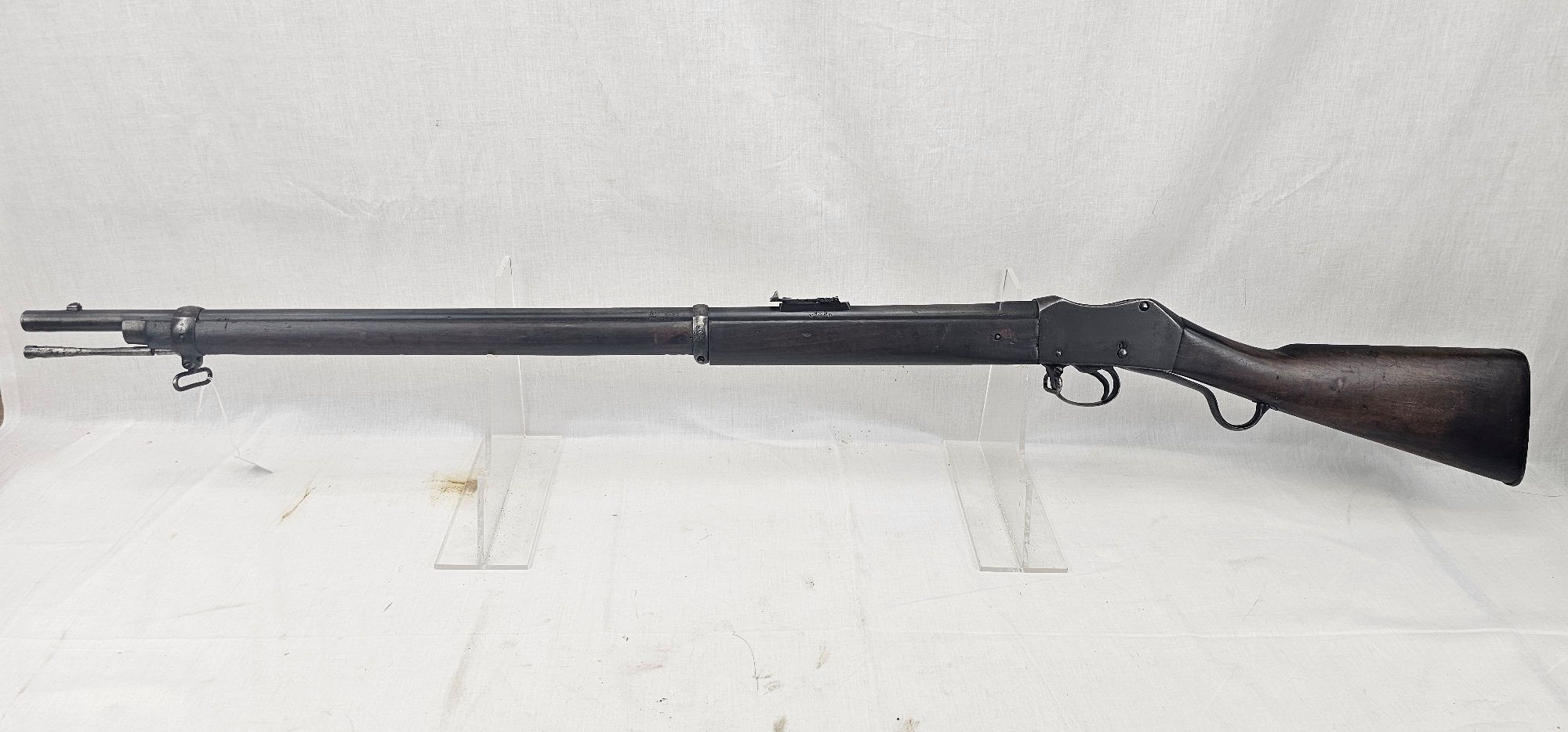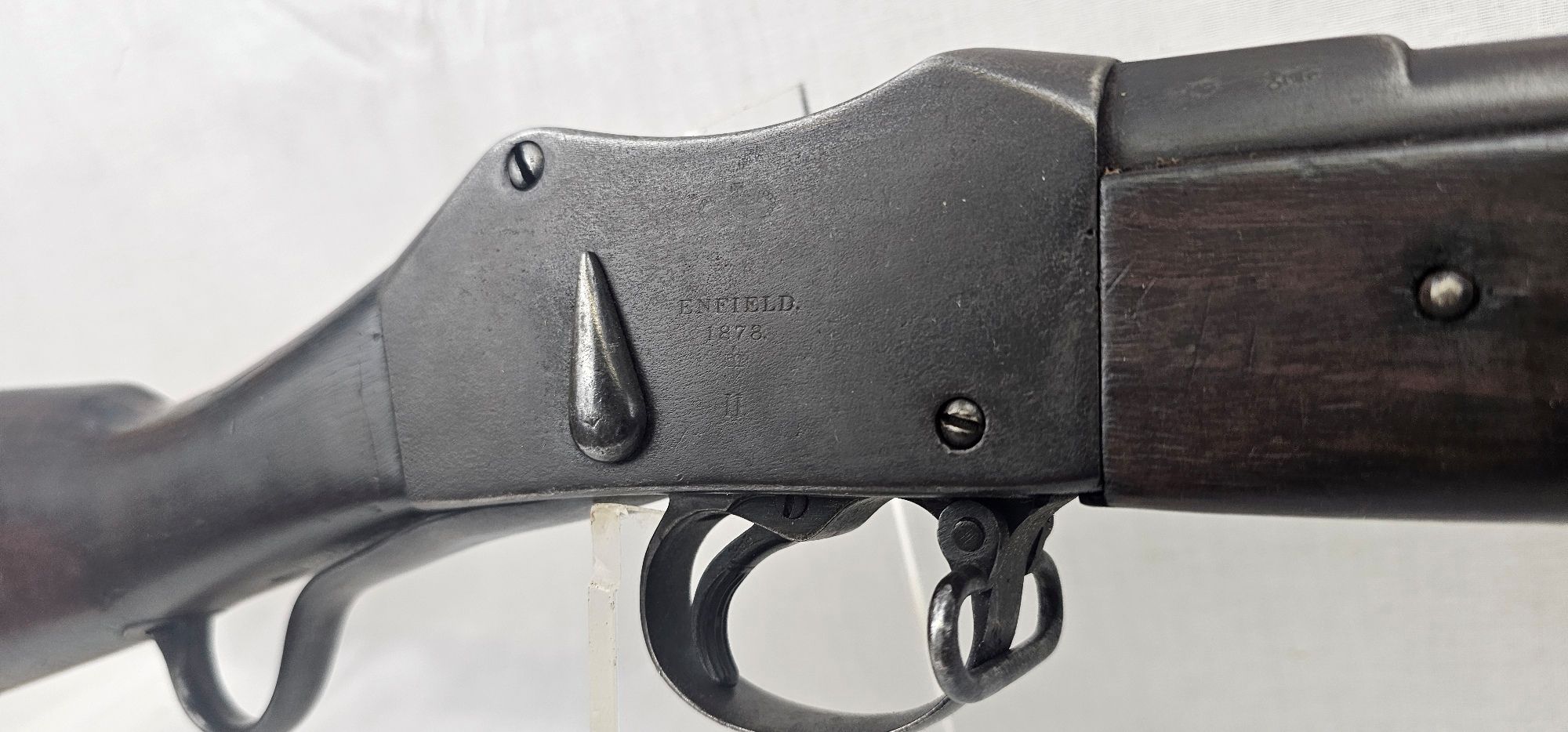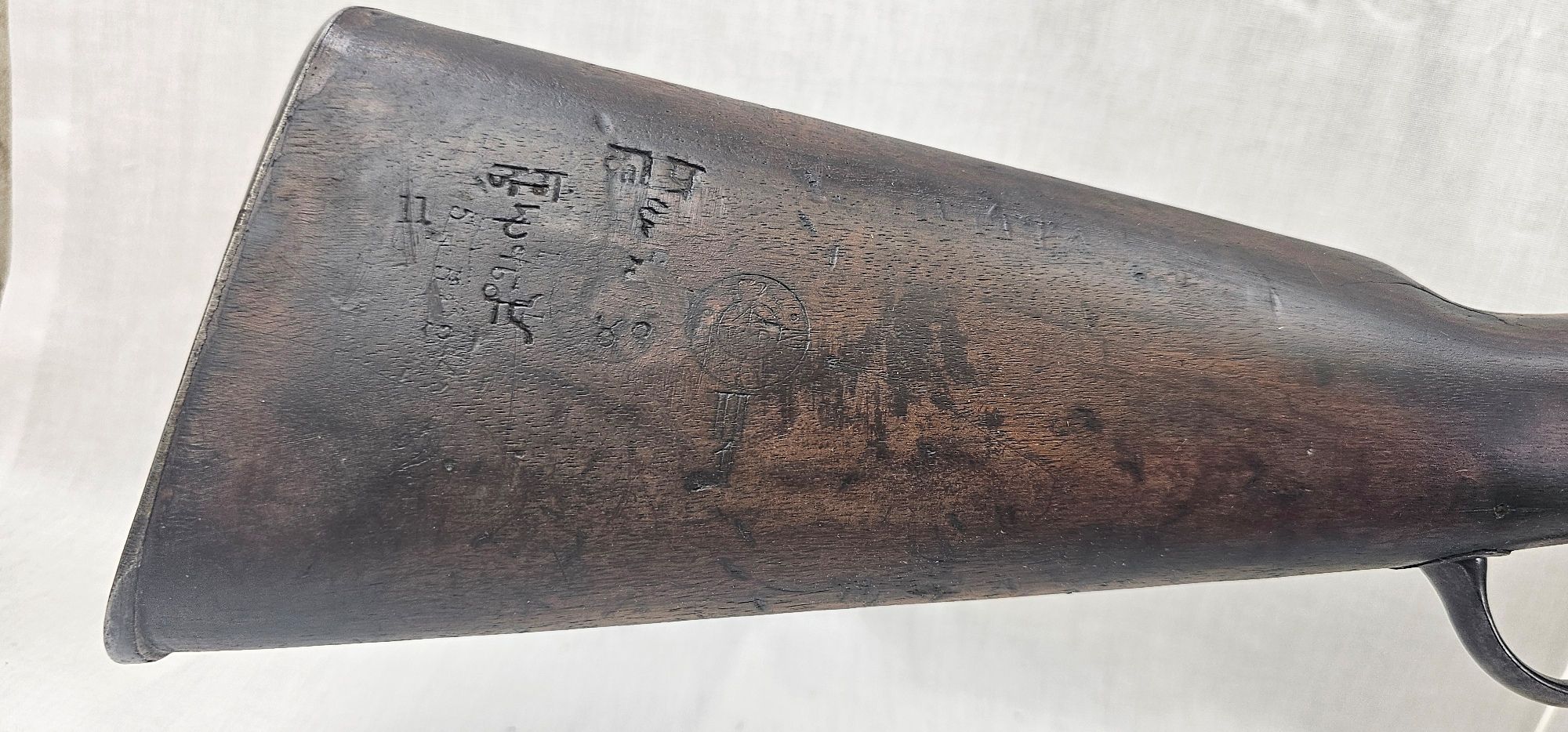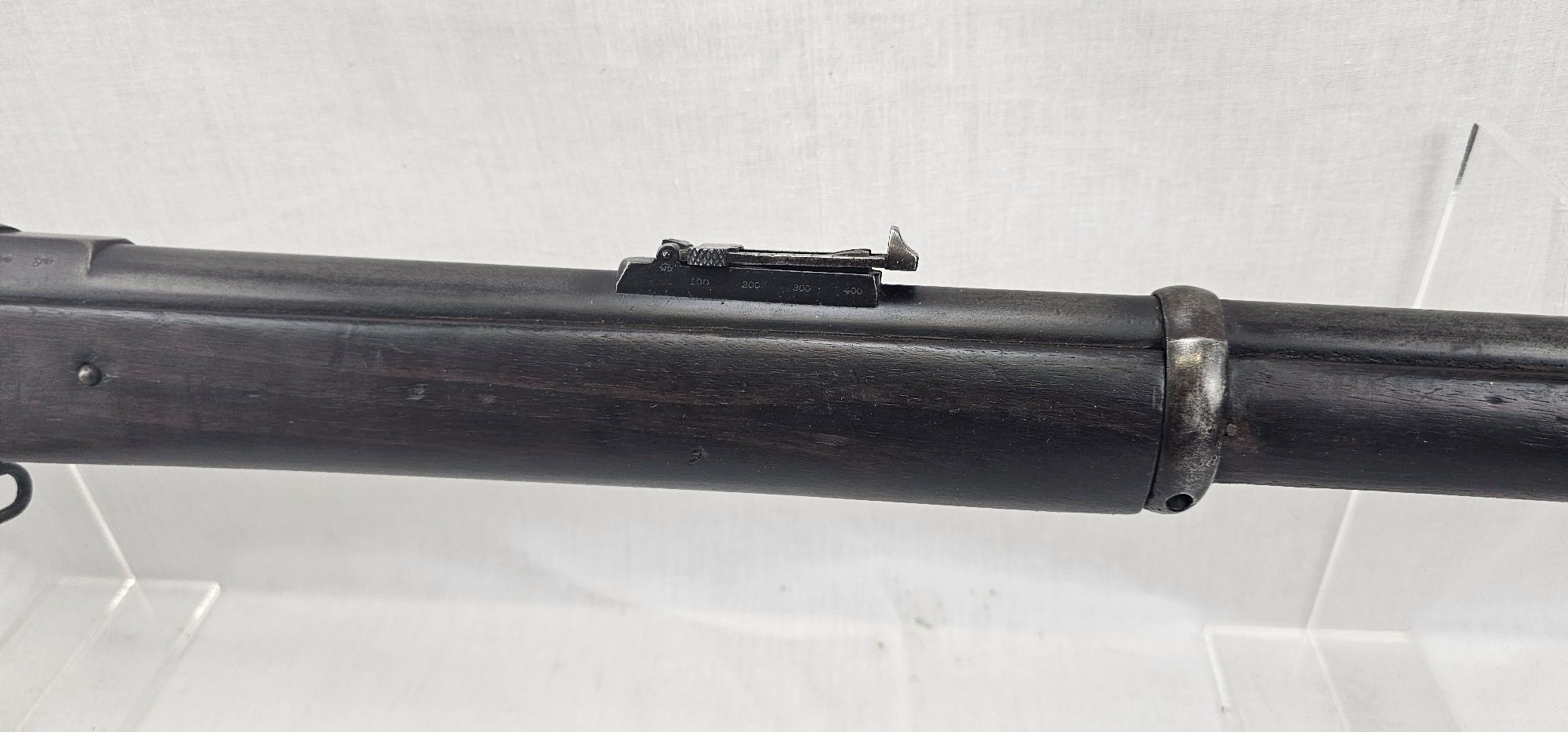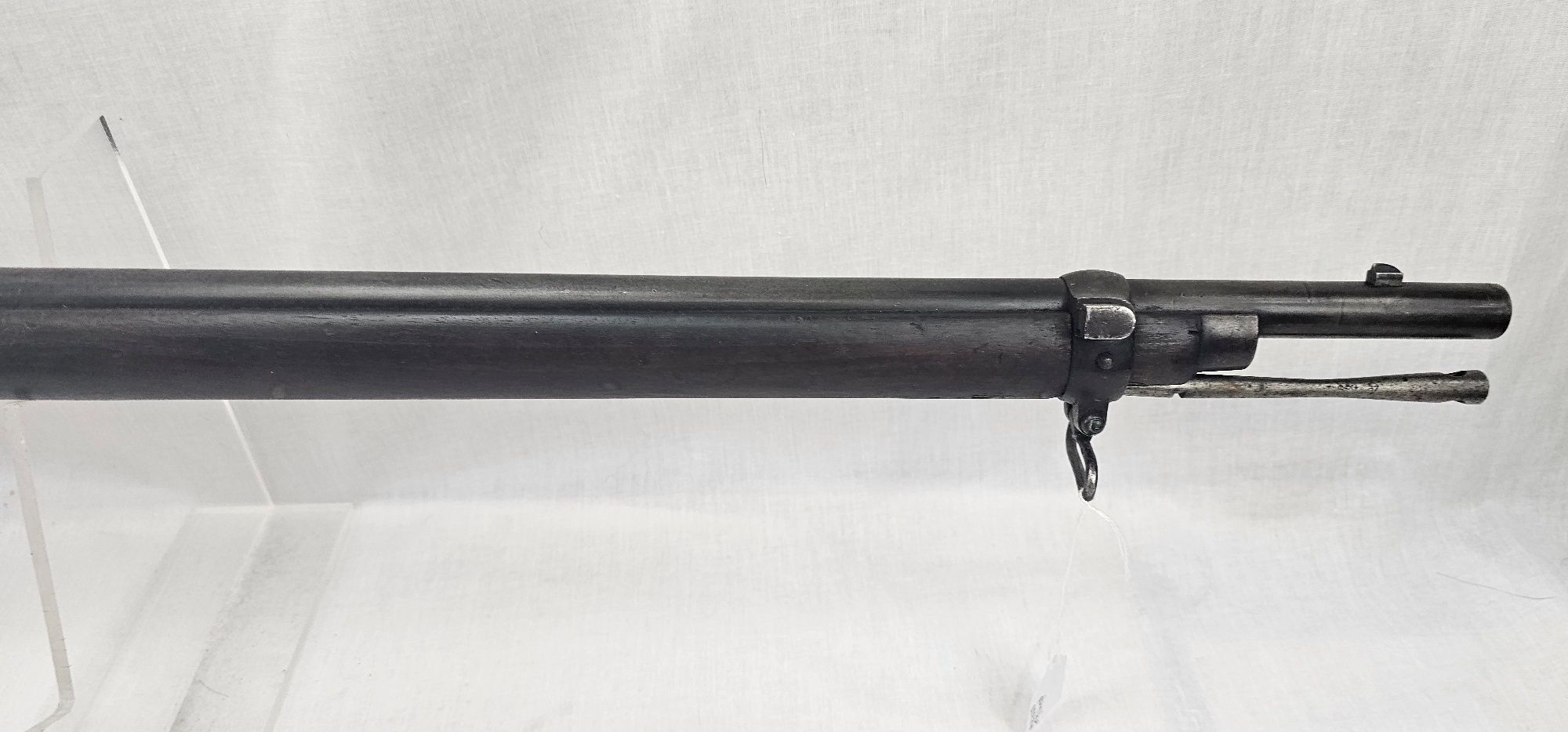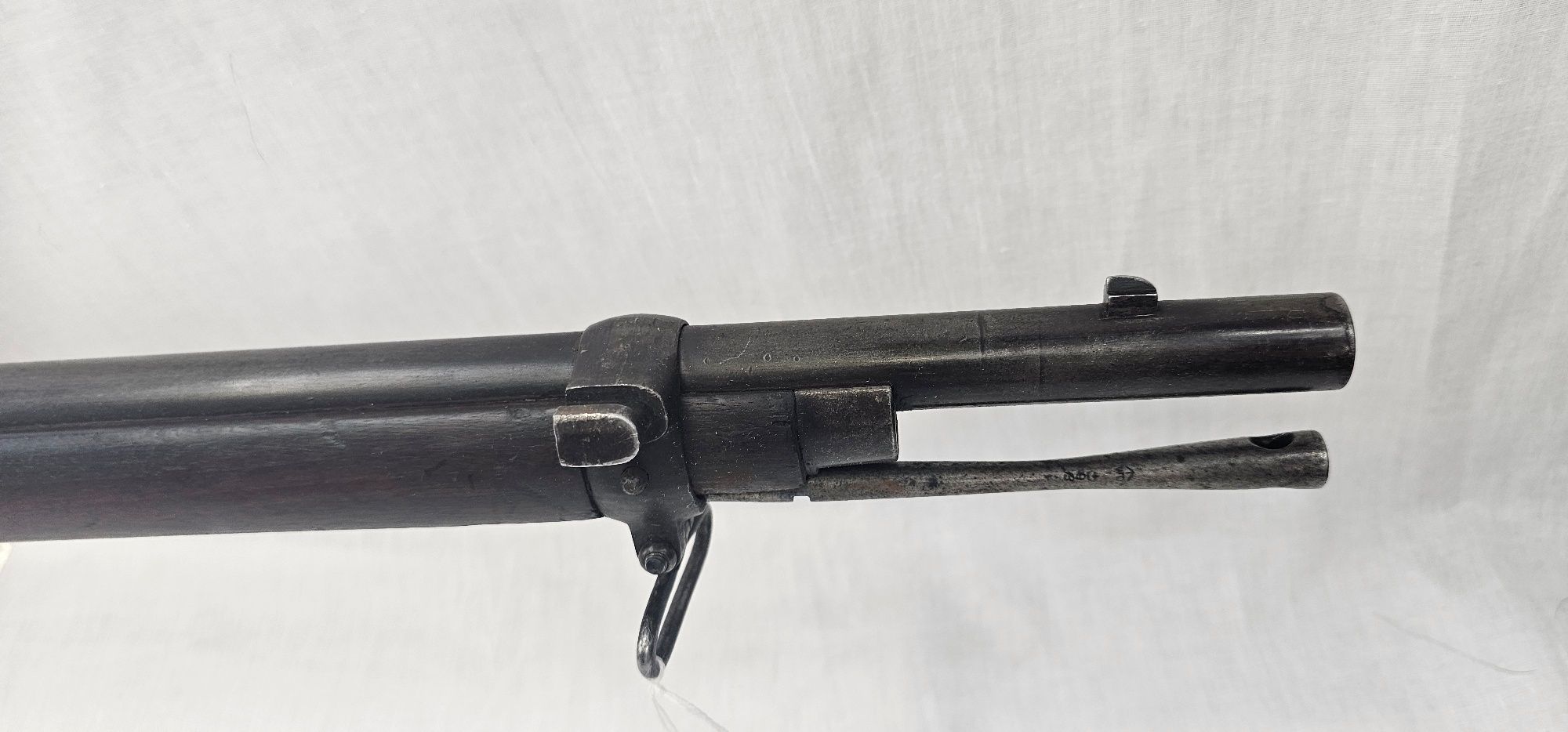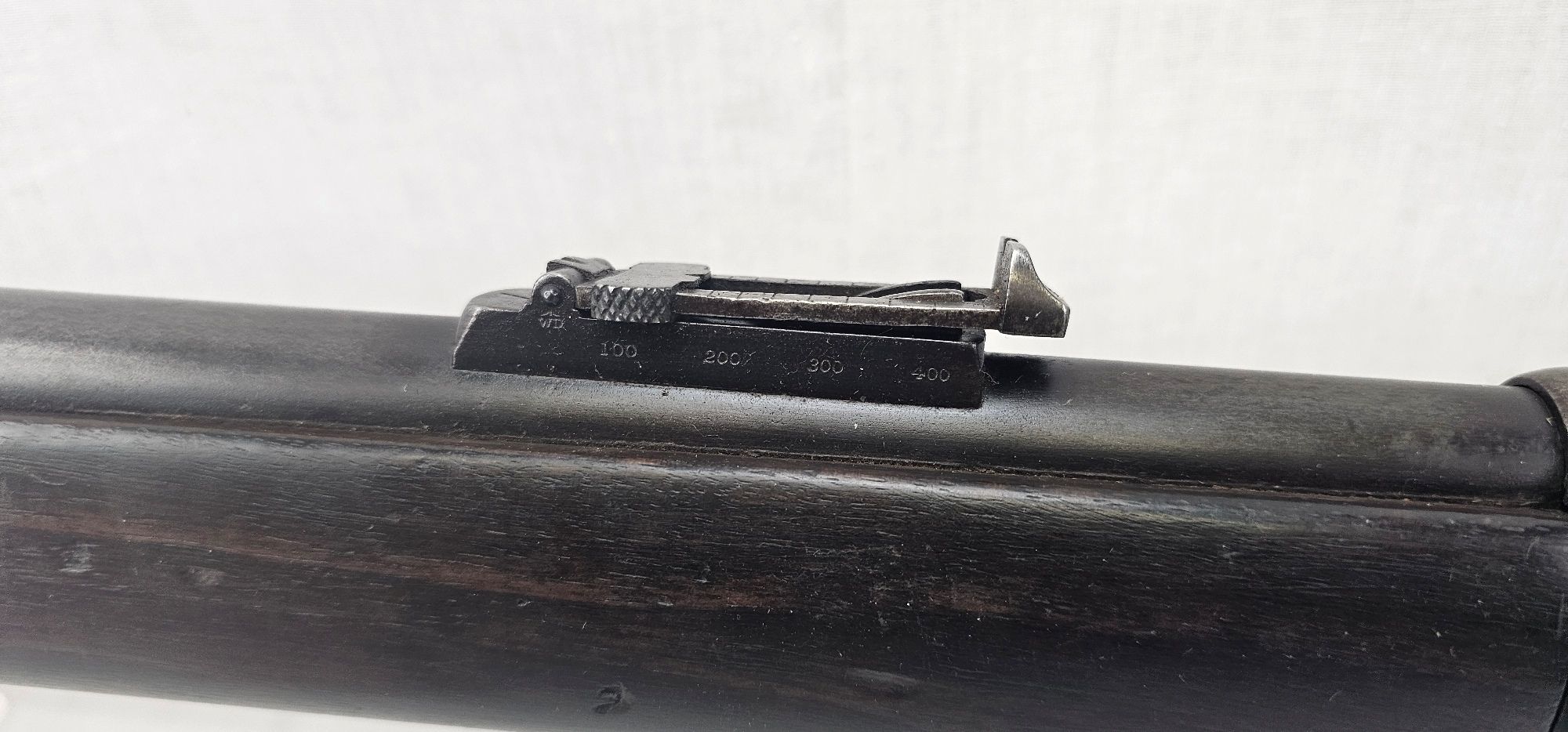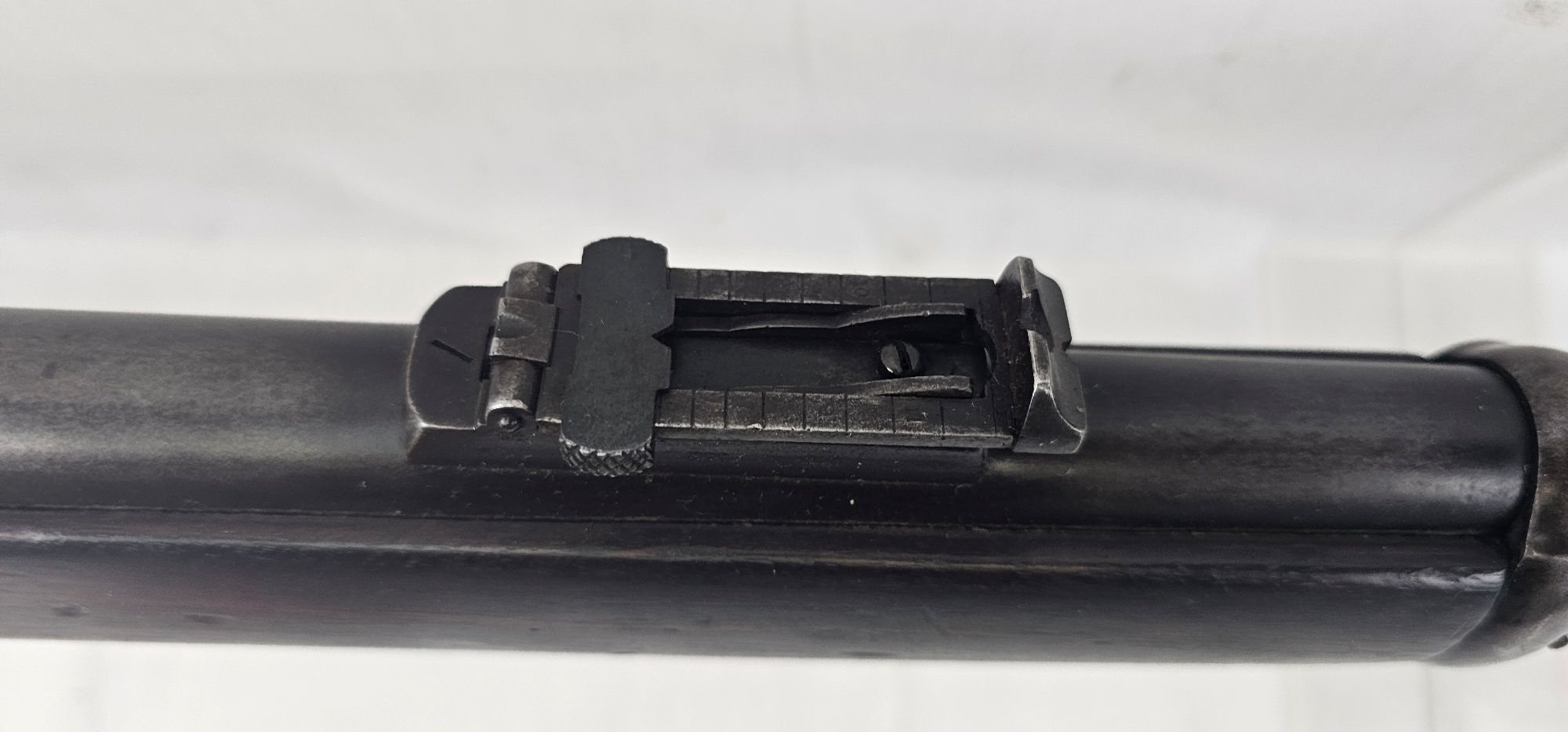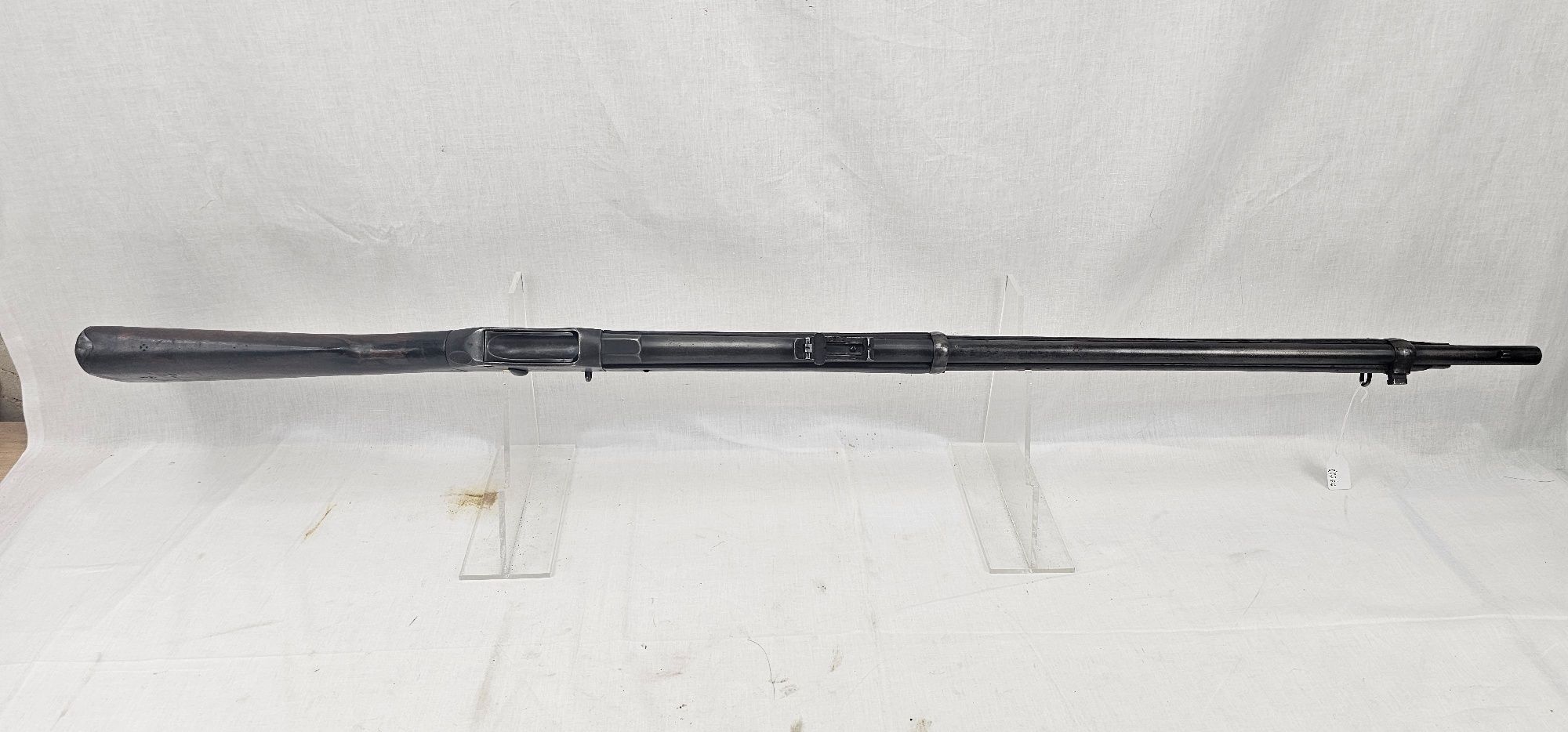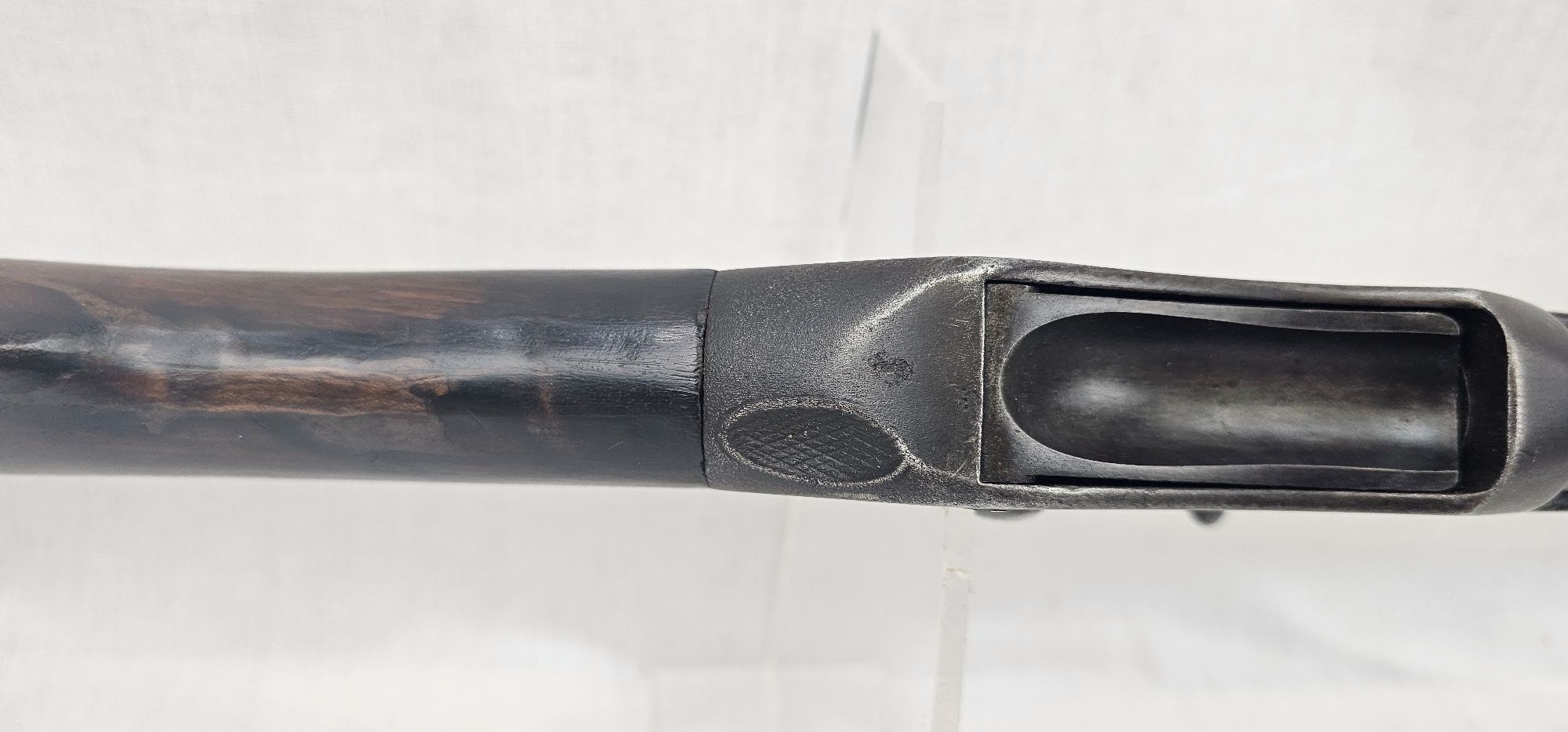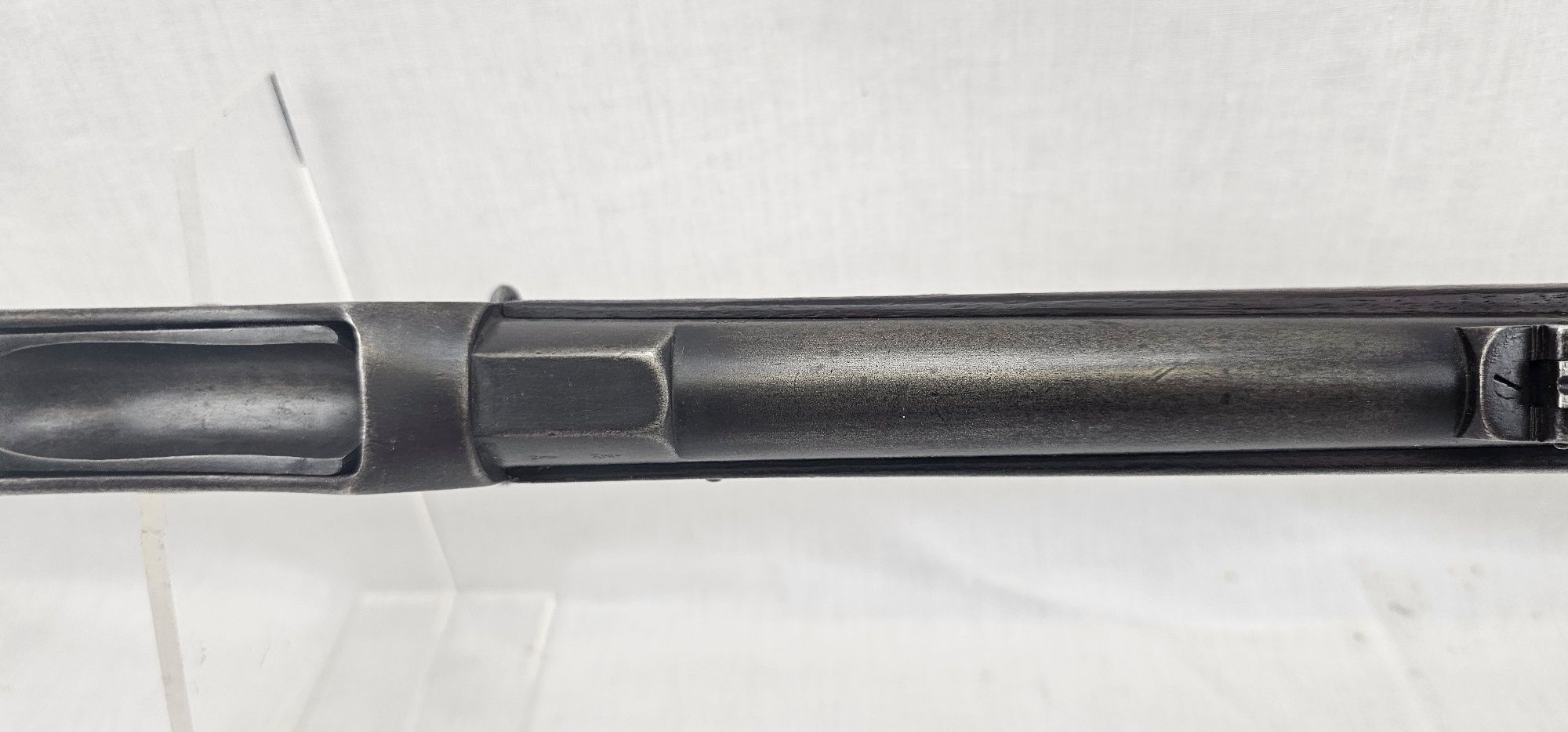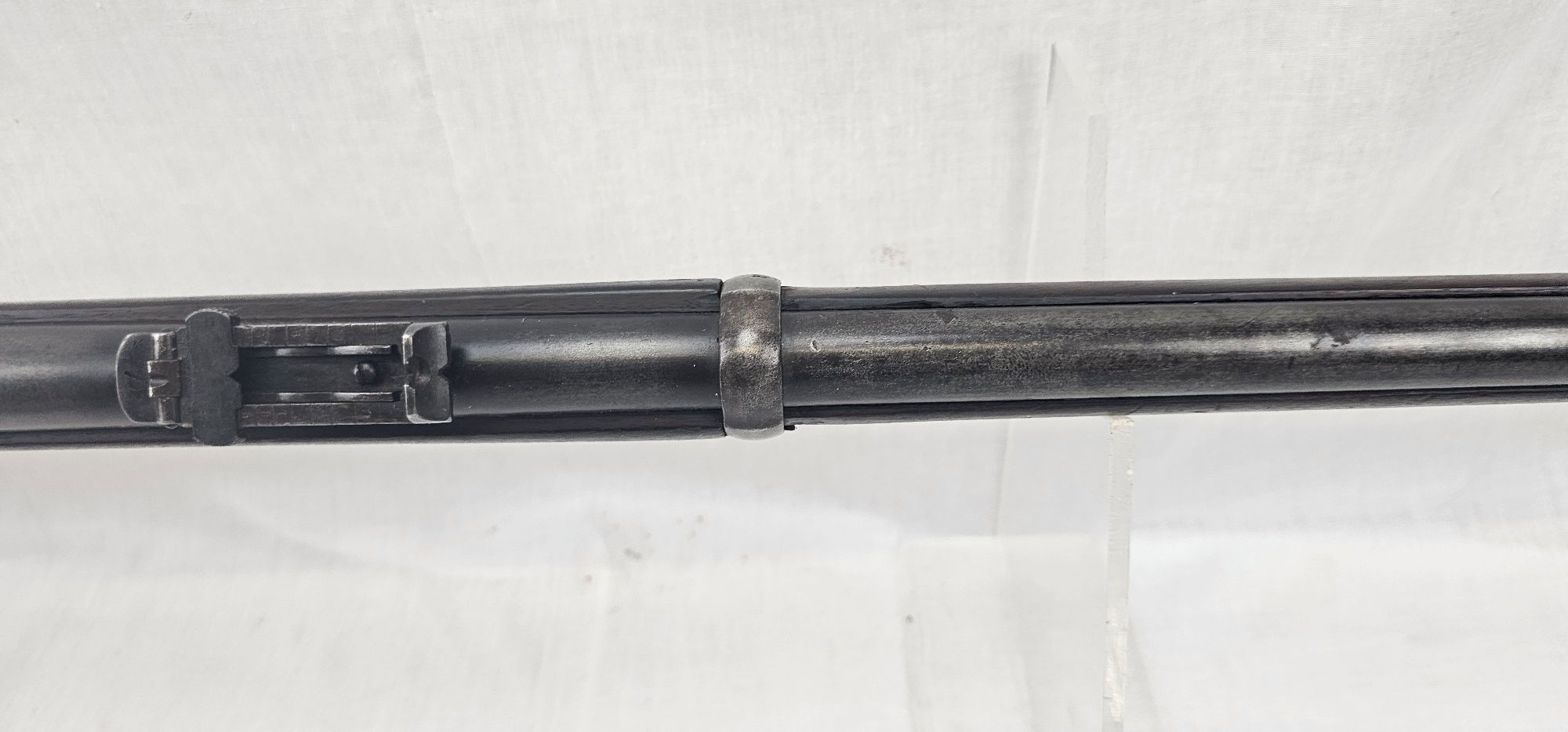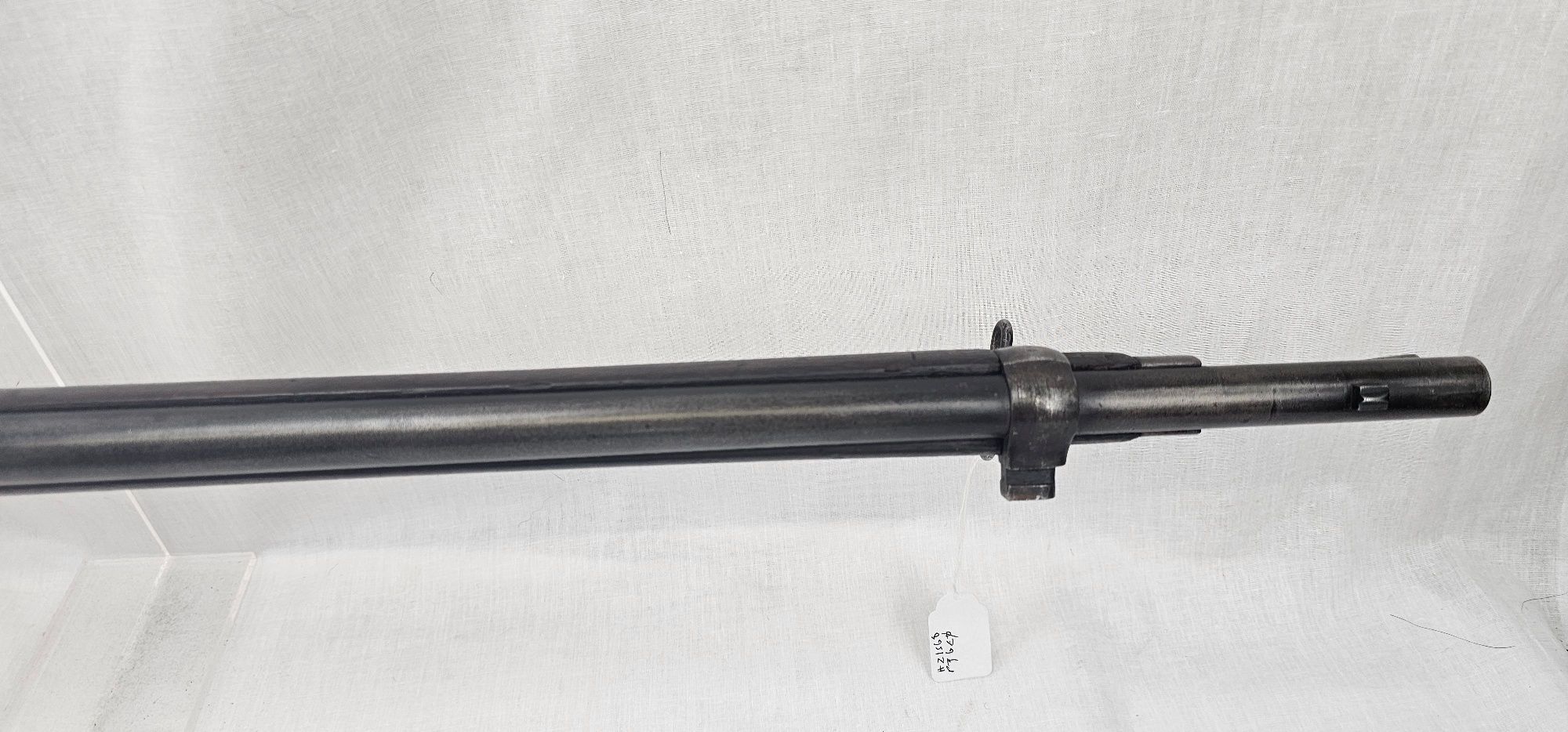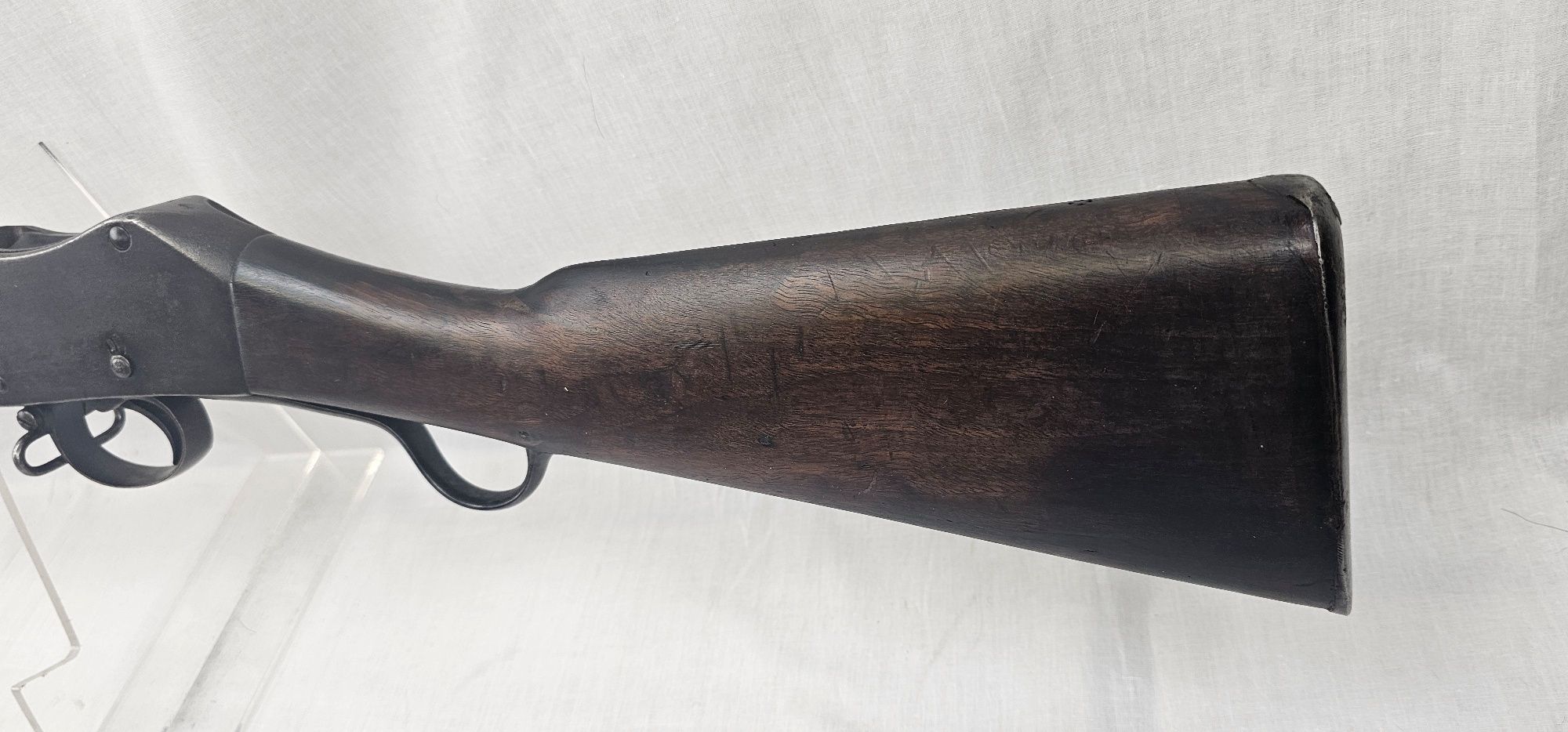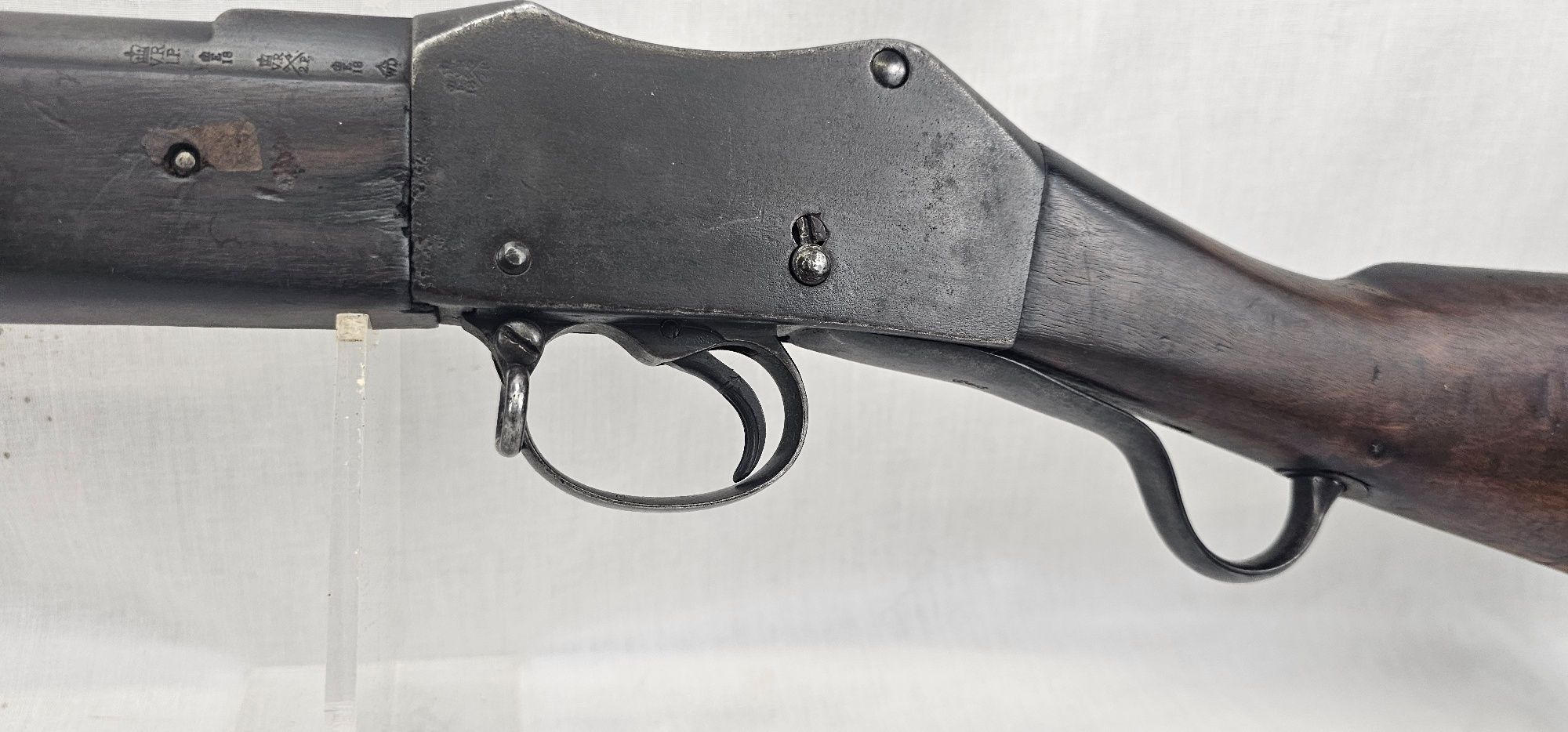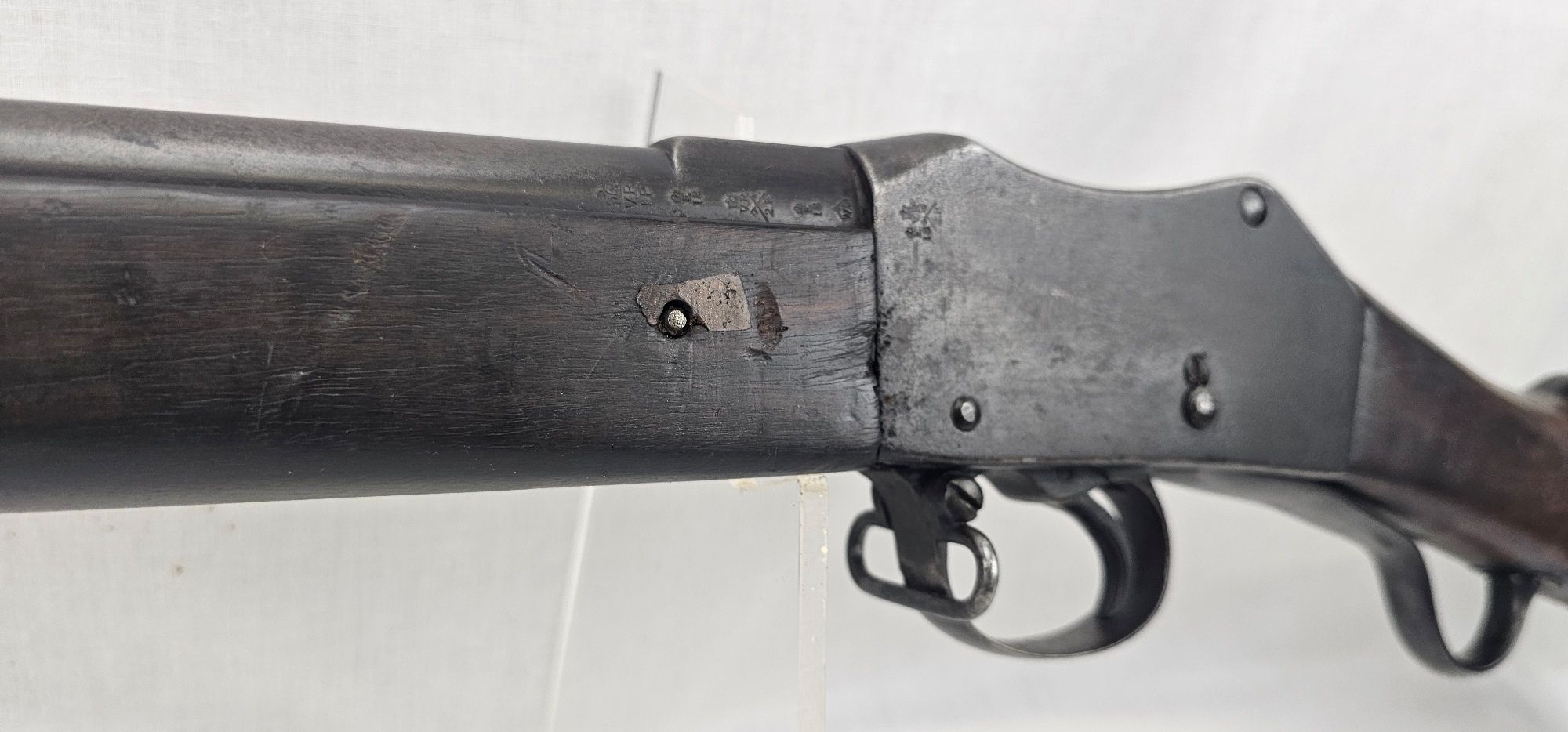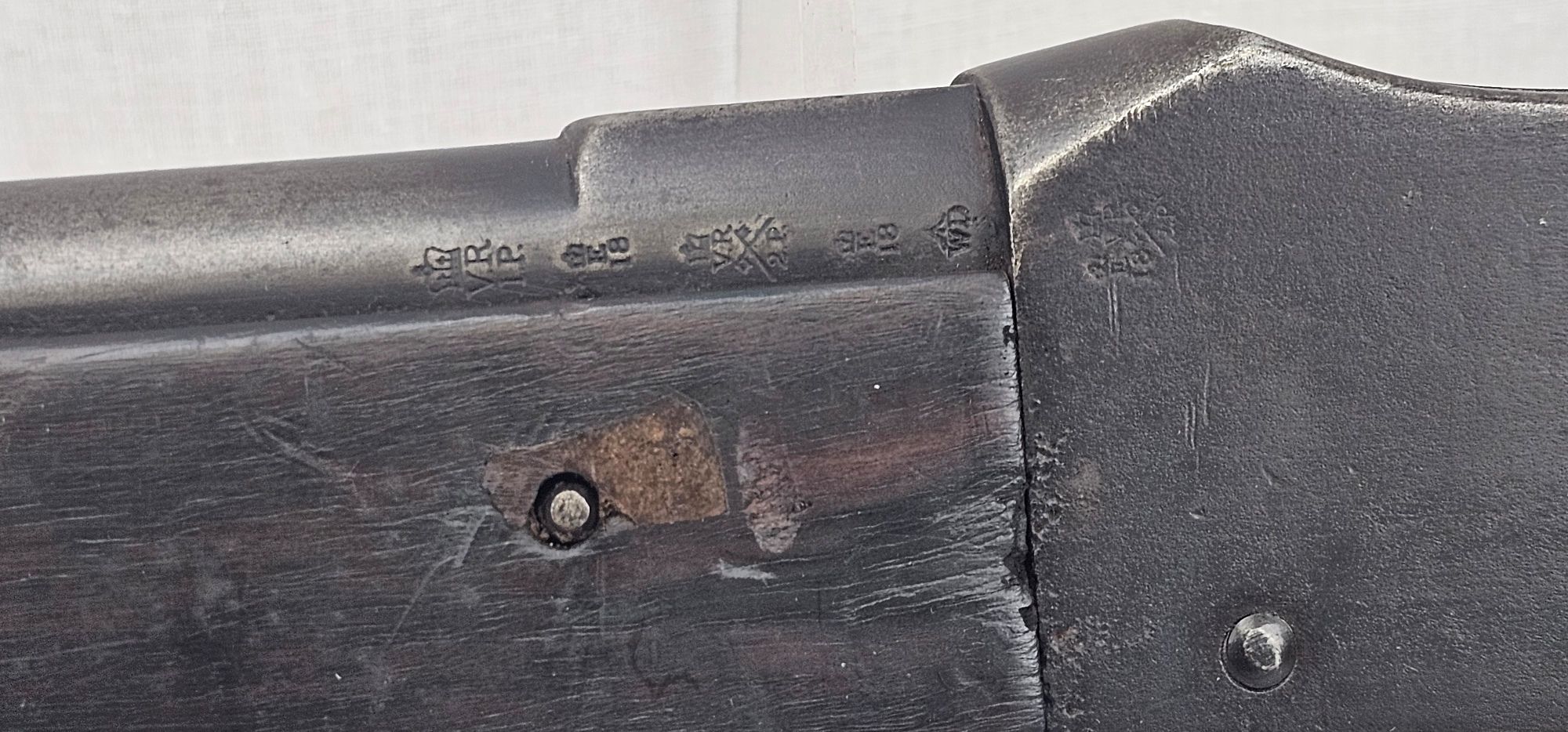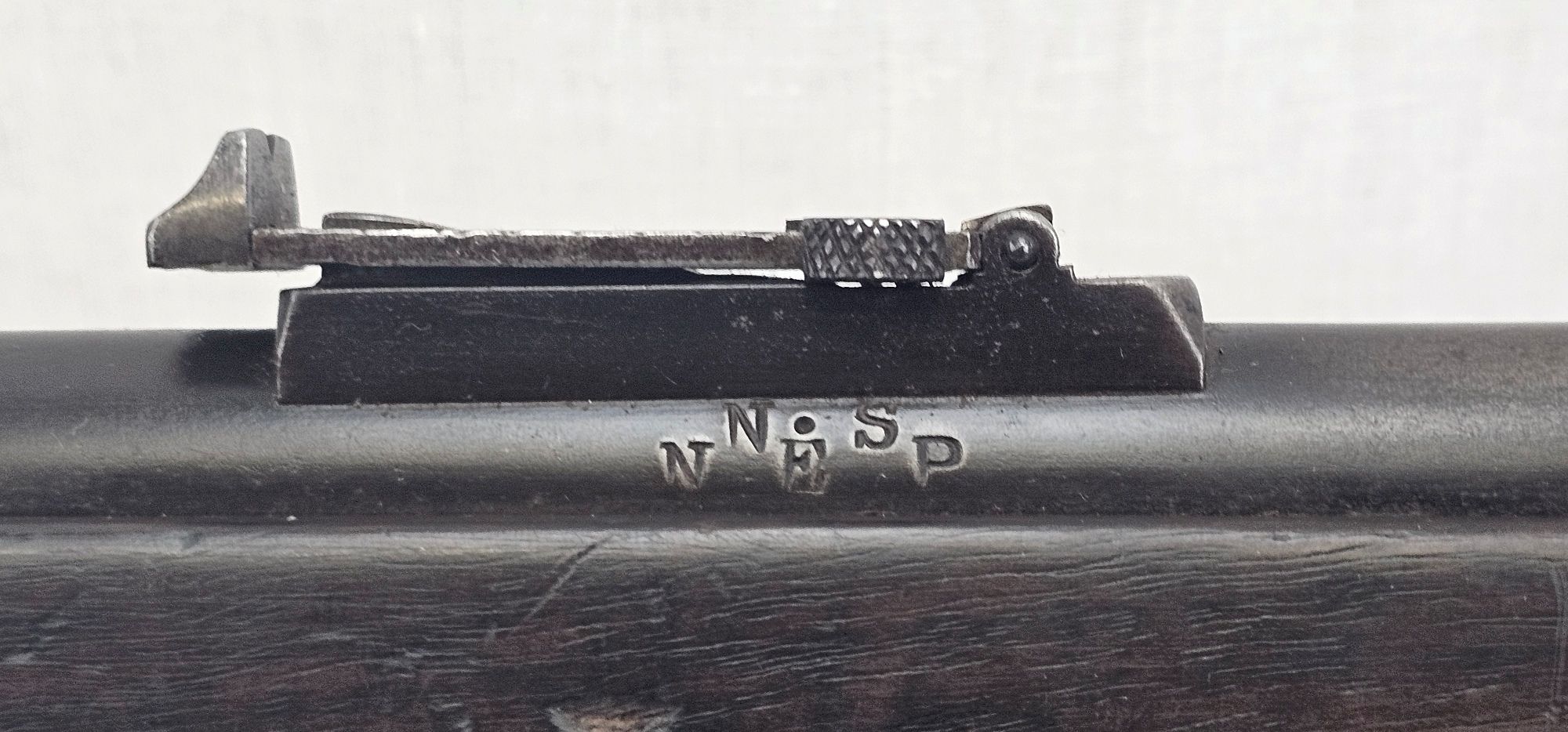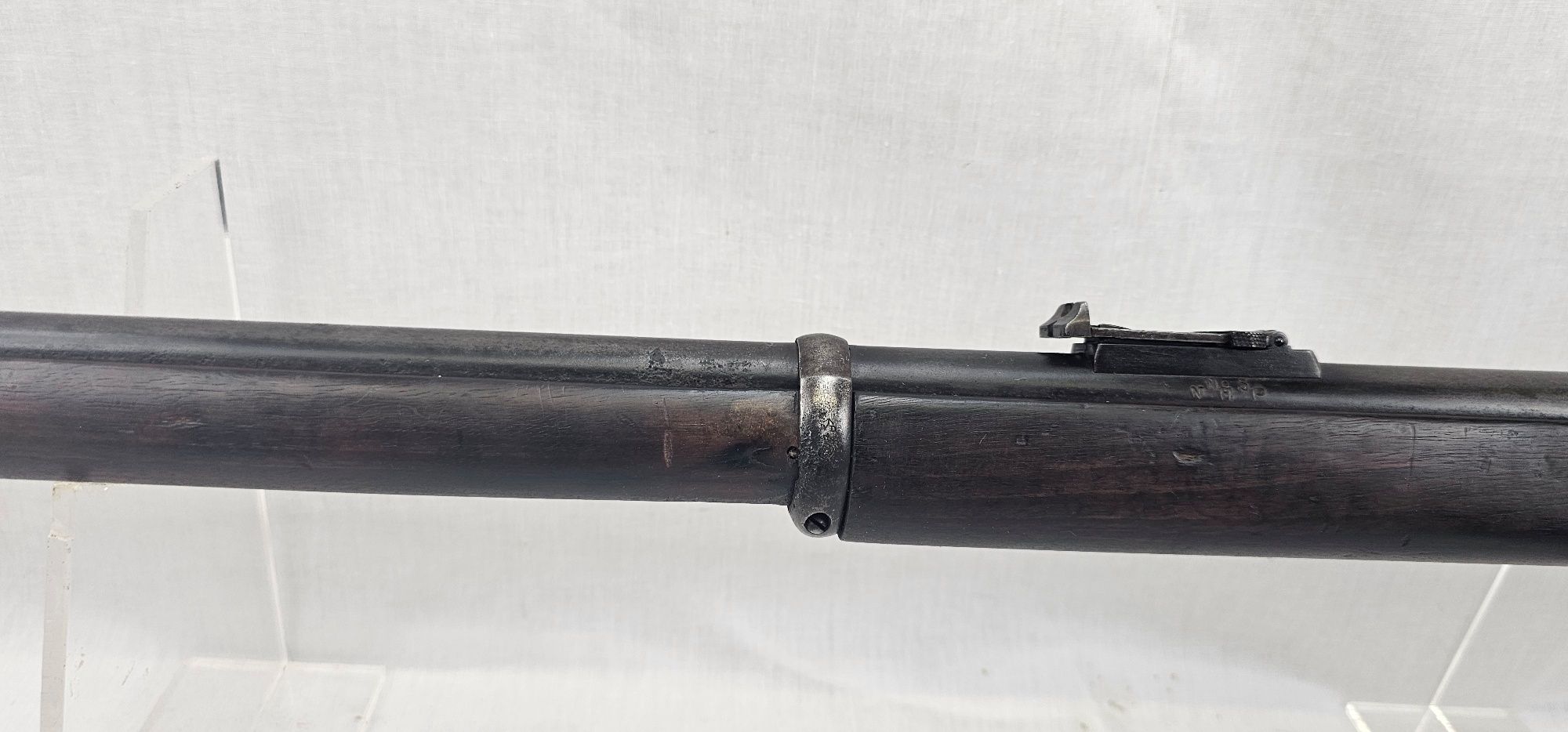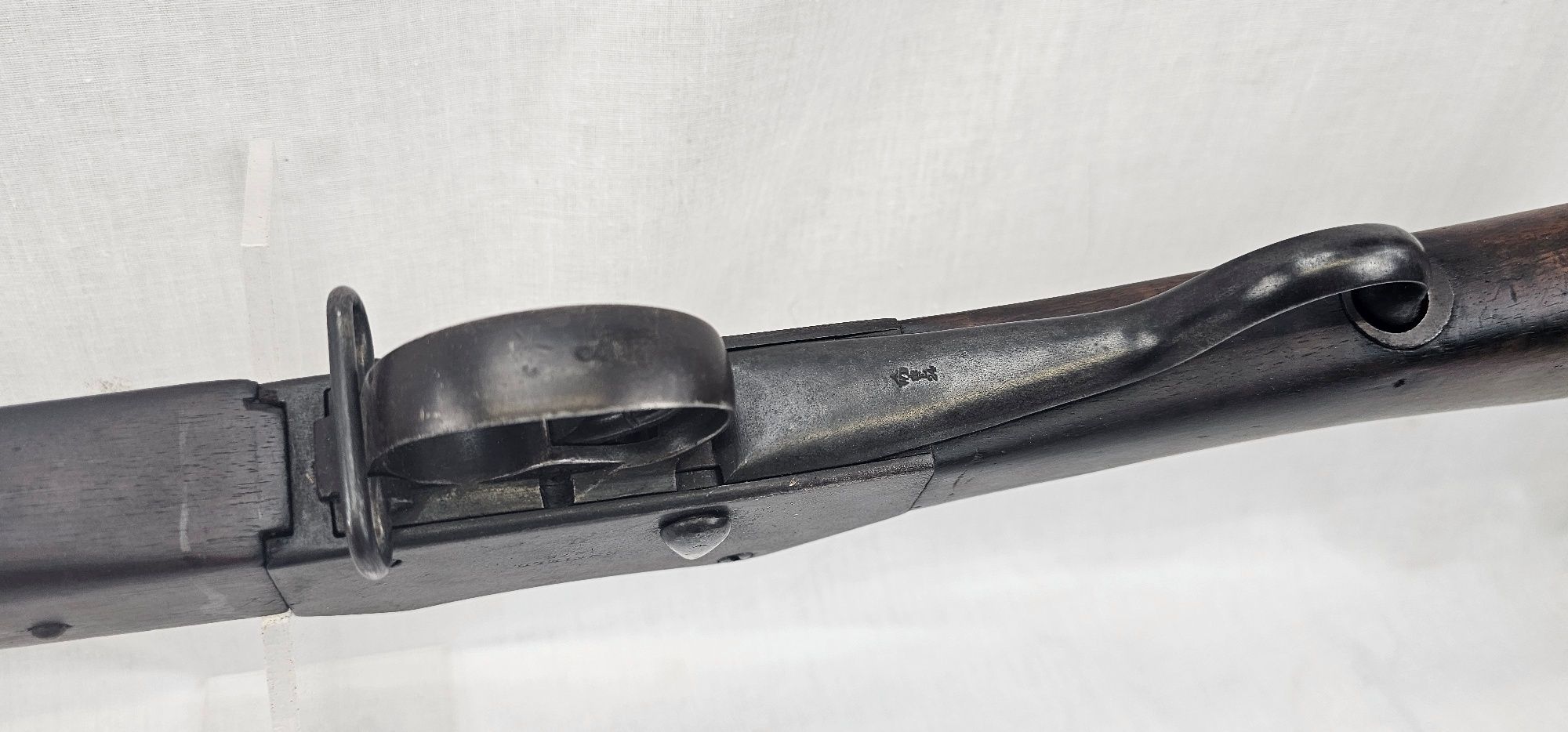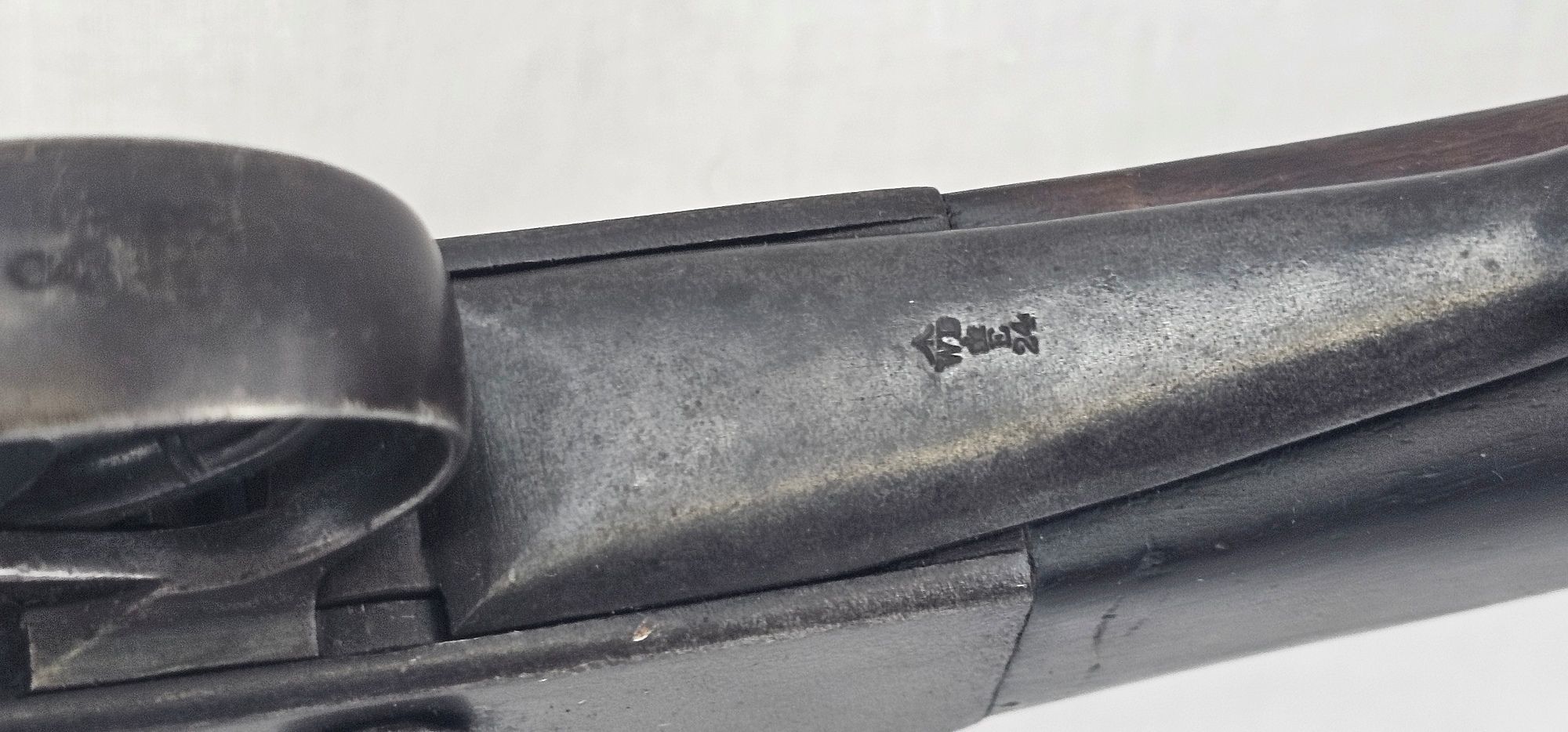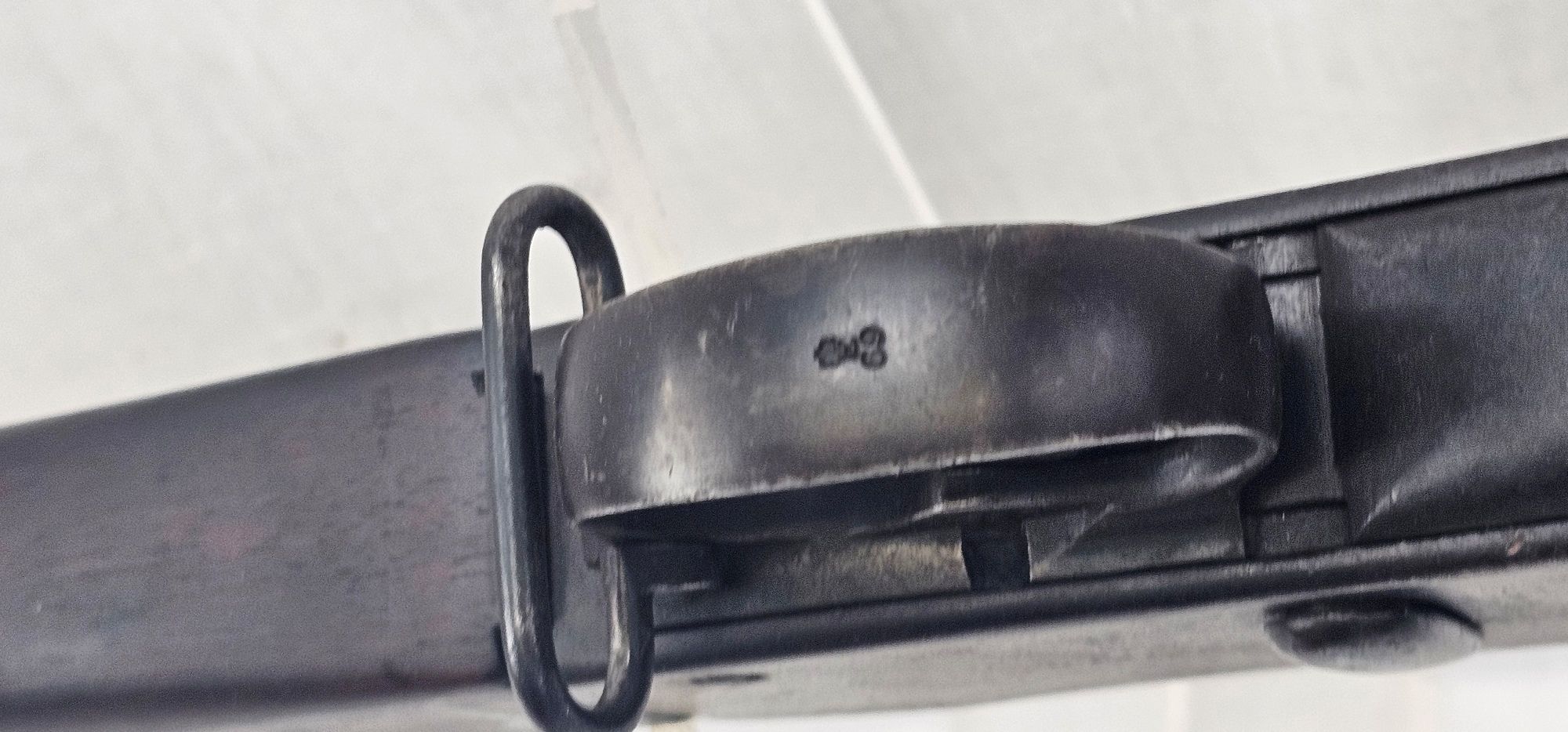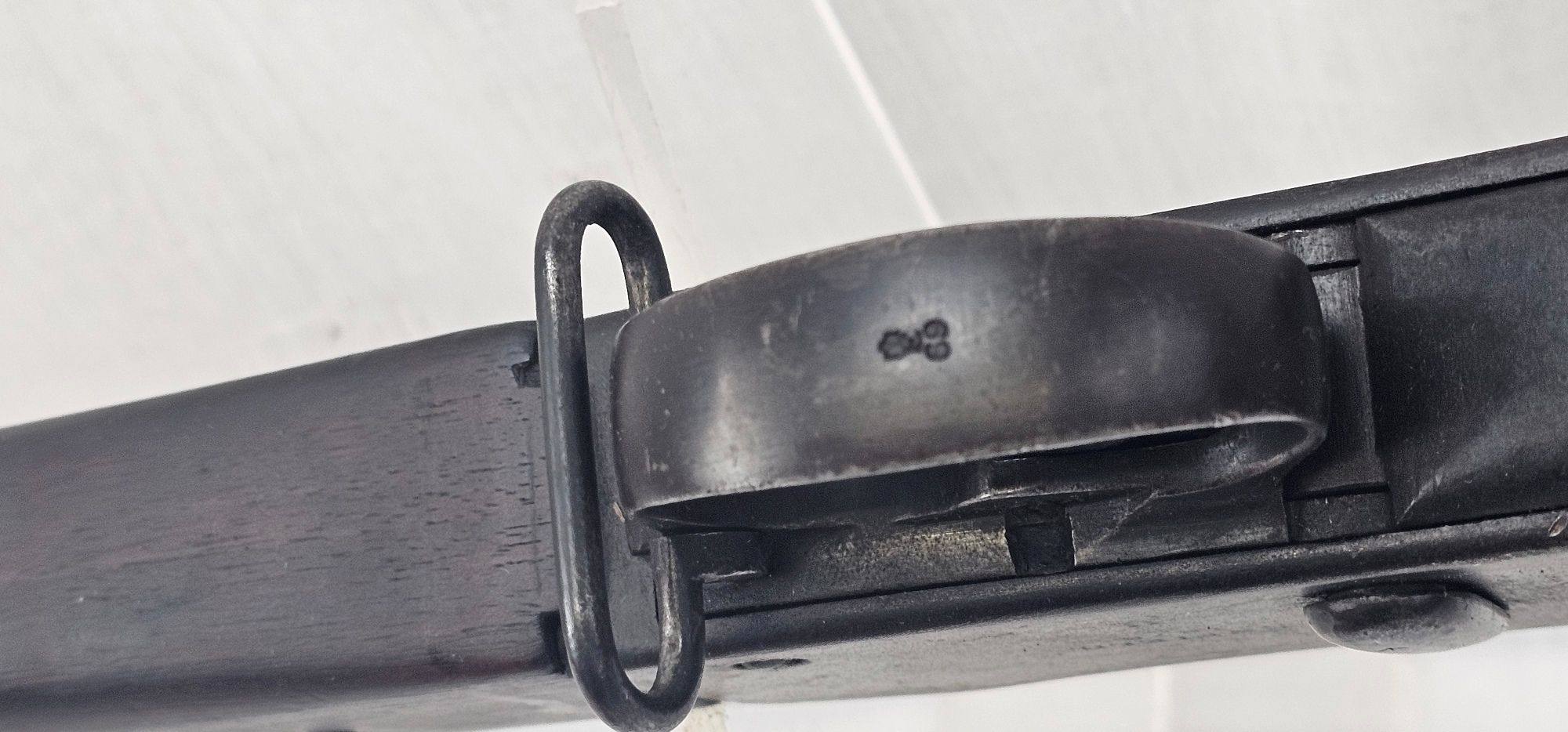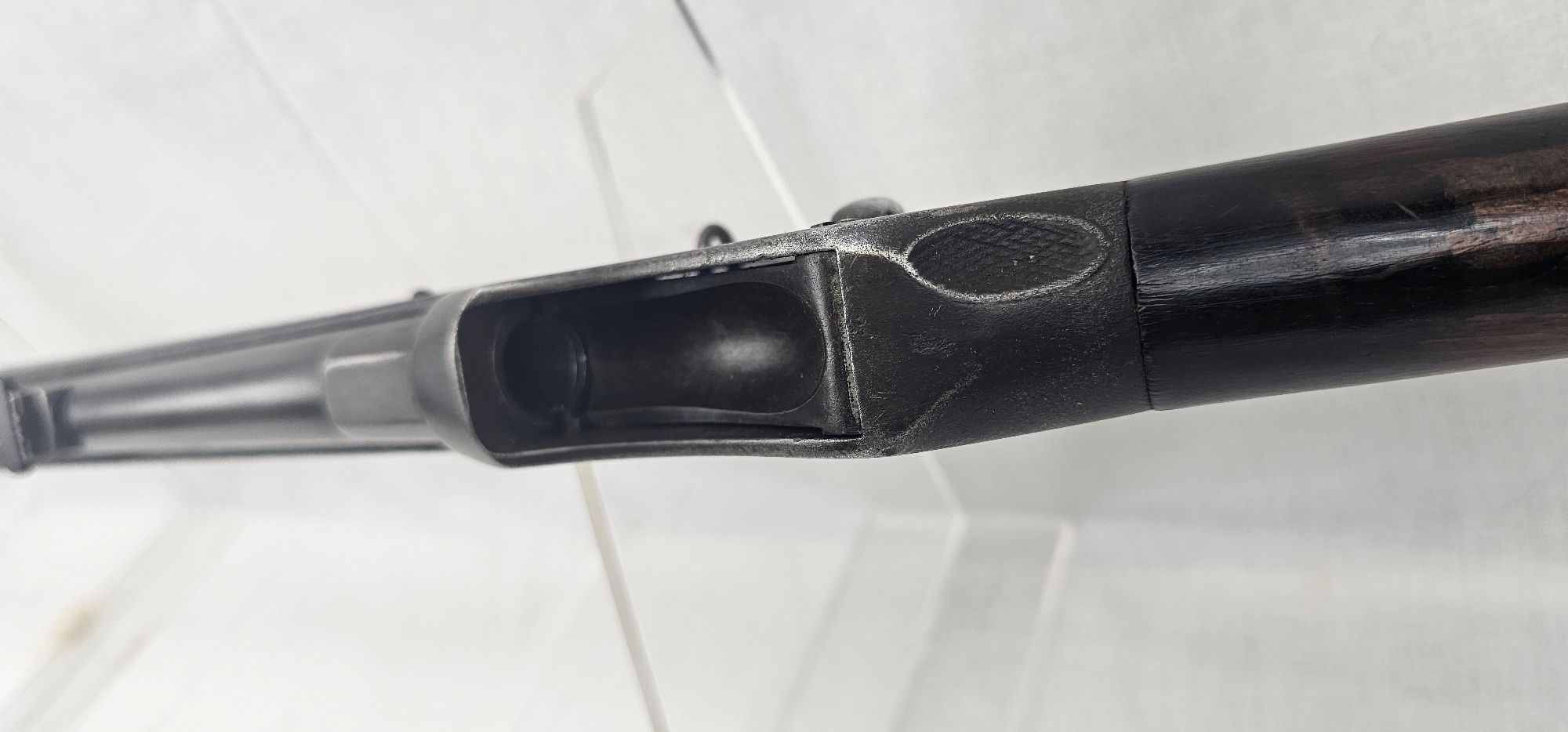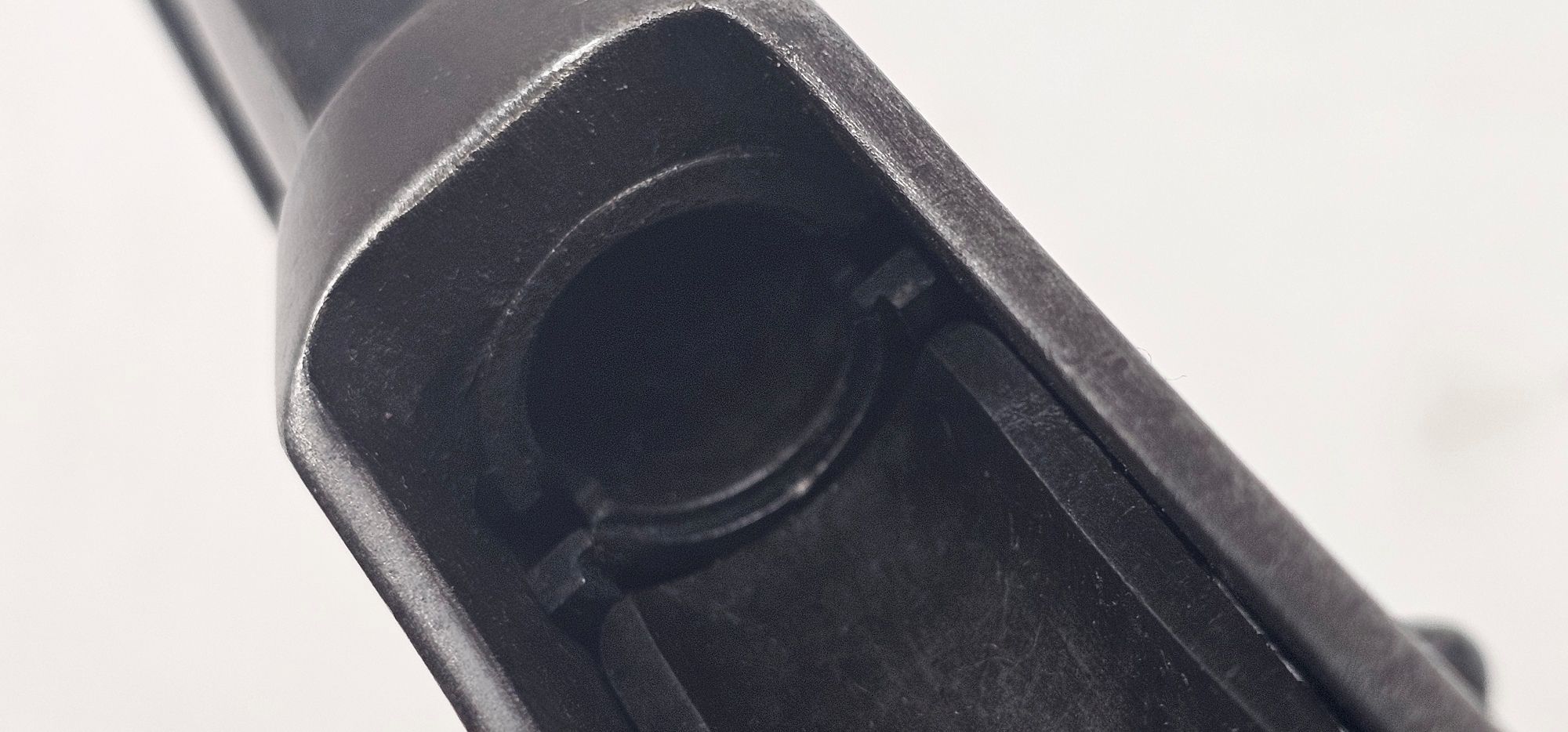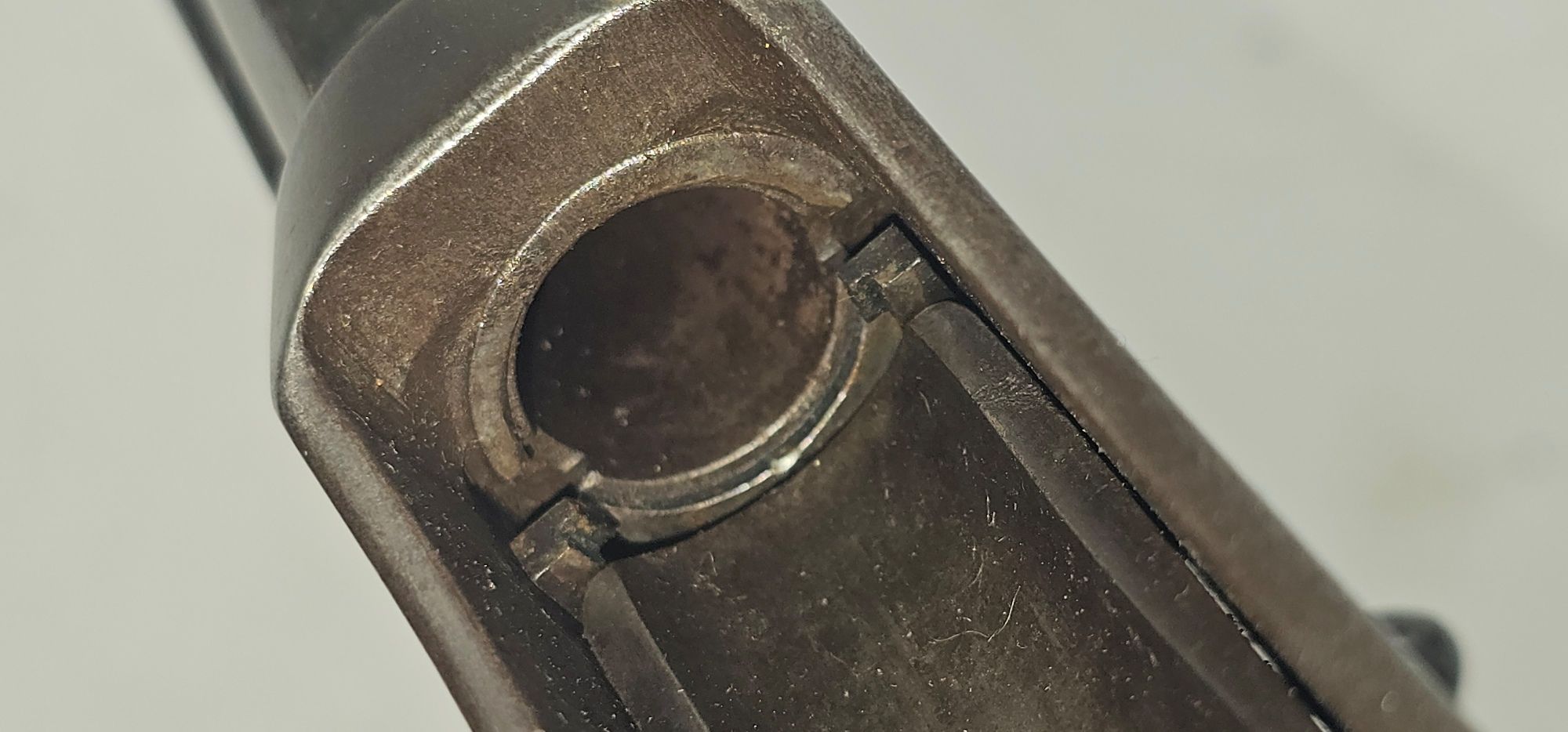~ Zulu War Period Enfield 1878 Martini-Henry Mk II .577 Cal Rifle ~
The but stock bears the War Department stamp and a series of sepoy arsenal marks. All the metal components bear the Enfield factory proof marks and inspector’s marks.
The Martini-Henry Mk II rifle is one of the most famous rifles associated with British colonial conflicts, particularly the Anglo-Zulu War of 1879. The Martini-Henry was introduced in the late 19th century and was the standard issue rifle for British soldiers at the time.
~ Condition ~
Because is an obsolete caliber the rifle cocks and fires as it should. All the mechanics work just fine.
There is slight pitting on the barrel at the wooden stock level.
Historical Context
Introduction: The Martini-Henry rifle series was first introduced in 1871 and underwent several improvements in subsequent versions. The Martini-Henry Mk II, specifically, was introduced in 1877, and many of the rifles used during the Zulu War were this variant.
Anglo-Zulu War (1879): The rifle became iconic due to its extensive use during the Anglo-Zulu War, especially in notable battles such as the Battle of Isandlwana and the defense of Rorke’s Drift. British soldiers armed with Martini-Henry Mk II rifles faced overwhelming numbers of Zulu warriors, often armed with traditional spears (assegai) and shields.
Service Life: The Martini-Henry Mk II saw service through numerous colonial conflicts beyond the Zulu War and was in British military service until it was eventually replaced by more modern bolt-action rifles like the Lee-Metford in the late 19th century.
Design and Features
Action: The Martini-Henry Mk II uses a single-shot, lever-action breech-loading system. The action is a combination of a lever and a tilting block, designed by Swiss designer Friedrich von Martini. This made the rifle faster to reload than muzzle-loaders and more efficient in battle.
Caliber: It fired a .577/450 Boxer-Henry cartridge. The cartridge was a bottleneck design, with a .577-inch case necked down to accept a .450-inch projectile. The cartridge was black powder-loaded, typical of the time, with a significant recoil.
Barrel Length: The rifle had a long barrel, measuring approximately 33.22 inches (84.38 cm), making it well-suited for long-range engagements typical of colonial warfare.
Sights: It was equipped with adjustable sights, graduated to ranges of up to 1,200 yards (1,097 meters), although practical accuracy was significantly less, especially in battlefield conditions.
Weight: The rifle weighed around 9.5 pounds (4.3 kg), making it relatively heavy by modern standards but in line with military rifles of the period.
Rate of Fire: An experienced soldier could fire around 10-12 rounds per minute with the Martini-Henry, a respectable rate for a single-shot rifle in its era.
Stock and Construction: The stock was typically made of walnut, and the rifle was robust and durable, designed to withstand harsh conditions in colonial environments.
Significance in the Zulu War
Battle of Isandlwana (January 22, 1879): Despite the superior firepower of the Martini-Henry rifles, the British were overwhelmed by the sheer numbers and tactical prowess of the Zulu forces. This battle was one of the worst defeats for the British during their colonial period.
Defense of Rorke’s Drift (January 22–23, 1879): In contrast, the Martini-Henry Mk II played a significant role in the successful defense of Rorke’s Drift, where fewer than 150 British soldiers held off thousands of Zulu warriors. The high rate of fire and the disciplined use of the rifle contributed to the defenders’ ability to repel the Zulu attacks.
Technical Evolution
The Martini-Henry rifle series went through several iterations:
Mk I (1871): The original version, which had several limitations.
Mk II (1877): The improved version, featuring a stronger breech block and modifications to improve durability and functionality in the field. This is the version most commonly associated with the Zulu War.
Later Marks (III, IV, etc.): Continued improvements were made, but the Mk II remained the primary version during the Anglo-Zulu War.
Legacy
The Martini-Henry Mk II is remembered as an iconic symbol of British colonial warfare. It represented the technological superiority the British relied on during their imperial conquests. However, it also highlighted the limitations of European firepower when facing unconventional warfare tactics, as seen in the Zulu War.
Today, the Martini-Henry Mk II is a prized collector’s item, and its role in battles such as Rorke’s Drift has immortalized it in military history and popular culture.



